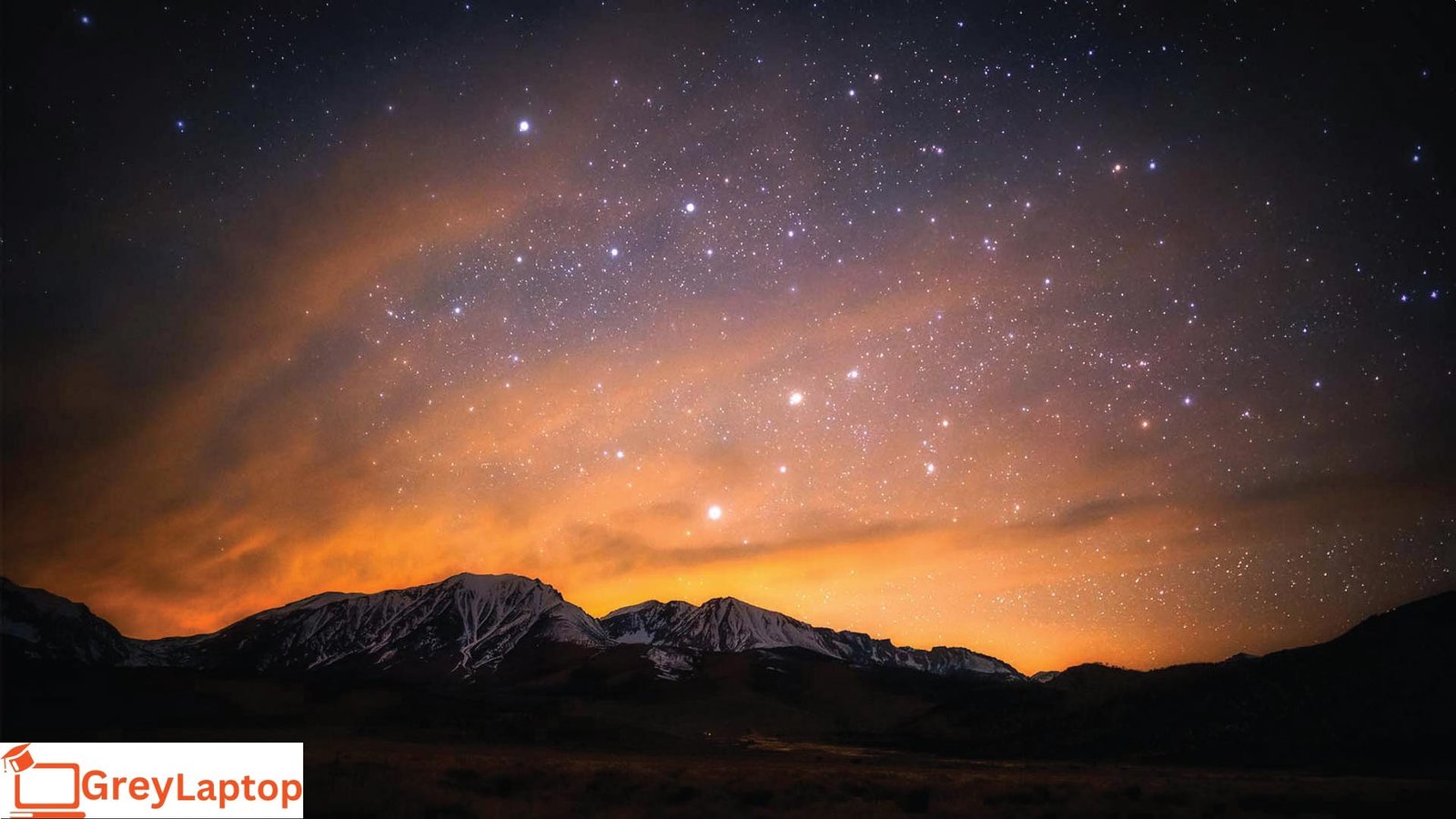The stars have engaged humanity for centuries, guiding vacationers, inspiring myths, and fueling scientific inquiry. Among the endless celestial bodies these days, something caught the eye of astronomers and stargazers alike: Star-923. This article delves into the fascinating world of Stars-923, exploring its discoveries, properties, and the insights it provides to our universe.
Discovery of stars-923
The adventure of encountering Stars-923 began with a dedicated team of astronomers who used advanced telescopes and era to experiment with the night sky. These astronomers were part of a study project aimed at finding new stars and better understanding the structure and formation of the universe.

Initial observations
In the early levels, the crew noticed an unusual bright spot in part of the sky. This place, which they later named Stars-923, stood out for its peculiar lighting styles and intensity. Initial sightings indicated that this celebrity was special to many others that had been previously documented.
Confirmation and naming
To verify their findings, the astronomers used several telescopes and collected statistics over many months. They worked with other observatories around the world to ensure the accuracy of their observations. Once they were sure of their discovery, they named it Stars-923, following the convention of using numbers to discover newfound stars.
Characteristics of Stars-923
Stars-923 has several different properties that make it a great hobby for astronomers. Understanding these characteristics allows scientists to learn more about the megastar’s origin, composition, and potential influence on its surroundings.
Size and brightness
One of the first things astronomers noticed about Star-923 was its size and brightness. star-923 is largely larger and brighter than our sun. This titanic length signifies our strong gravity, which affects the nearby celestial bodies of our metals and the surrounding space.
Temperature and Color
Stars-923 also stands out due to its temperature and color. The surface temperature of the megastar is much better than that of the sun, giving it a bluish hue. This color shows that Stars-923 is a completely warm and vibrant star that radiates a great deal of power.
Distance from Earth
Another exciting characteristic of Stars-923 is its distance from Earth. This megastar is thousands upon thousands of mid-years away and is located in a galaxy some distance beyond our own Milky Way. This vast distance means that the light we see from Star-923 has traveled thousands and thousands of years to reach us.
Insights from Stars-923
The discovery of star-923 provided astronomers with valuable insights into the nature of stars and the universe. These findings have implications for our expertise in the field, the life cycle of stars, and the potential for encounters with various celestial phenomena.
The formation and evolution of stars
One of the key takeaways from reading Stars-923 is knowing more about how stars form and evolve. By reading the moderate and different records from Stars-923, astronomers can study the methods that lead to the supply and improvement of stars. This record allows scientists to create more accurate ways of star evolution and to predict the behavior of other stars.
Composition and structure
In addition, Stars-923 provides information on the composition and structure of stars. By examining the mild spectrum of a celebrity, astronomers can become aware of the elements found in its outer layers. This record shows details about the formation of a superstar and the kinds of matter that existed in the environment when it was born.
Impact on the surrounding universe
The size and brightness of Stars-923 suggests that it has a huge influence on its surroundings. A celebrity’s strong gravitational pull and powerful radiation can impact nearby celestial bodies, potentially affecting their orbits and composition. Understanding these effects allows scientists to study in detail approximately the dynamics of galaxies and the interactions between stars and other cosmic devices.

Technological advances in the study of stars
The discovery and observation of Stars-923 would not now be possible without generation improvements. Modern telescopes, satellites and computer models have revolutionized the field of astronomy, allowing scientists to explore the universe in more elements than ever before.
Advanced telescopes
One of the most important tools when analyzing stars like Star-923 is a telescope. Modern telescopes are equipped with powerful lenses and sensors that can detect the faint light of distant stars. These telescopes can be located on Earth or in space and present specific perspectives and talents for observing celestial instruments.
Space missions
Space missions have also played a vital role in the analysis of stars. Satellites and probes equipped with state-of-the-art instruments can obtain data from components of space that are difficult to observe from Earth. These missions provide rare facts about stars, galaxies and various cosmic phenomena.
Computer simulations
Computer simulations are any other key device in contemporary astronomy. By developing specific models of stars and their behavior, scientists can test their theories and predictions. These simulations help astronomers recognize complicated processes and phenomena that may be difficult to observe at once.
Future research on stars-923
The discovery of Stars-923 is just the beginning of what promises to be a long and exciting journey of exploration and discovery. Future studies will focus on collecting more data, refining our knowledge of the megastar and revealing new insights about the universe.
Ongoing observation
Astronomers will continue to observe Star-923 using various telescopes and instruments. These ongoing observations will help scientists gather more detailed records of the celebrity’s characteristics and behavior. By tracking Star-923 over time, astronomers can study changes and trends in the superstar’s life cycle.
Collaborative research
Research on Stars-923 will involve collaboration between exceptional observatories and research facilities around the world. By sharing records and know-how, scientists can create extra comprehensive information about big names. International collaboration will also help pool resources and knowledge and accelerate the pace of discovery.
Theoretical studies
In addition to observational research, theoretical research will play a key role in the Stars-923 know-how. The researchers will use computer models and simulations to test their hypotheses and predictions about the celebrity. These studies will help refine our theories about the formation, evolution and behavior of famous personalities.

The wider impact of the study of star-923
Stargazing-923 has implications for past astronomy. It can spark curiosity and interest in technology, market technological innovation, and deepen our knowledge of the universe and our place in it.
Inspiring future generations
Discoveries like Stars-923 may encourage future generations to pursue careers in science and generation. By showcasing the wonders of the universe and the power of discovery, these discoveries can spark curiosity and a passion for learning in younger minds. Education and outreach programs can help generate enthusiasm for astronomy among college students and the public.
Support for technological innovation
Tools and technologies advanced for star analysis may have advanced technologies from astronomy’s past. Innovations in telescopes, sensors, and fact-finding can benefit fields as diverse as medicine, engineering, and environmental science. The pursuit of expertise approximately space can push for technological advancements that improve our daily lives.
Deepening our understanding of the universe
Ultimately, observing the stars-923 and various celestial objects helps us answer fundamental questions about the universe. By learning more about stars, galaxies, and cosmic phenomena, we can deepen our expertise in how the universe works and our area within it. This know-how can shape our view of the world and inform our exploration of the area.
Mysteries of the Stars-923: Unanswered Questions
While scientists have good experience with Star-923, many questions remain unanswered. These mysteries push for continued research and exploration and highlight the complexity and wonder of the universe.
What is the exact age of Star-923?
Determining the exact age of Stars-923 is a difficult undertaking. Scientists estimate that it is tens of millions of years old, but determining its specific age requires some special observations and facts. Understanding the age of Stars-923 can offer insight into the celebrity’s life cycle and records of the galaxy in which it lives.
How were stars-923 created?
The emergence of Stars-923 is every other neighborhood of living research. Scientists believe that stars are formed from large clouds of fuel and debris that crumble under gravity. However, the specific conditions and processes that led to the formation of Hvězd-923 are not fully understood. By analyzing this megastar, astronomers want to further analyze the factors that influence the emergence of famous personalities.
What is the fate of stars-923?
Like all stars, Star-923 will eventually run out of nuclear fuel and undergo extensive modifications. The fate of star-923 would involve expanding into a large violet, losing its outer layers, and ending its life as a white dwarf, or perhaps exploding in a supernova. Predicting his fate requires a deeper understanding of his current nation and the bodily processes that operate within the famous personality.
More: Reddit
The role of amateurs in the study of the stars – 923
While professional astronomers play a vital role in the analysis of Stars-923, novice astronomers also contribute valuable observations and records. Collaboration between professionals and amateurs complements overall star information and promotes a sense of network in astronomy.
Citizen science projects
Civic technology projects invite the public to participate in scientific studies. Amateur astronomers can join these projects and help look at Star-923 and other celestial objects. By contributing their time and observations, they help professional astronomers gather facts and make new discoveries.
Observation techniques
Amateur astronomers often use smaller telescopes and simpler equipment compared to professional observatories. Despite this, they can still make significant contributions through star-923 tracking for brightness, function, and various property modifications. These observations complement the records collected with the help of expert astronomers and provide a broader picture of the behavior of the superstar.
Educational activity and public involvement
Public involvement in the Stars-923 study is important for promoting interest in astronomy and technological know-how as a whole. Educational programs and public events play a key role in making astronomy useful and exciting for everyone.
School programs and workshops
Many educational institutions offer astronomy apps and workshops. These assignments introduce college students to the wonders of space and offer hands-on stories with telescopes and various devices. Learning about stars-923 and other celestial bodies can encourage college students to pursue careers in science and generation.
Public lectures and stargazing events
Public lectures and stargazing allow people of all ages to learn about astronomy and view the night sky. Astronomers and educators measure their knowledge of Star-923 and other stars and help the public recognize the significance of these celestial bodies. These opportunities regularly include opportunities to flip through the telescopes and observe Star-923 for yourself.
Cultural and Philosophical Impact of Stars-923
In addition, the discovery and view of Stars-923 has cultural and philosophical implications. It invites us to reflect on our area within the universe and the nature of existence.
A wonder of the universe
Stars-923 and various celestial instruments evoke a sense of wonder and interest in space. They remind us of the vastness of the area and the endless mysteries ready to be explored. This experience of surprise can inspire creativity, medical research and a deeper appreciation of the world of herbs.
Our place within the universe
Studying stars like Stars-923 encourages us to think about our proximity in space. It raises questions about the origin of the universe, the possibility of extraterrestrial life, and the fate of our planet. These considerations can shape our worldview and influence how we answer scientific and philosophical questions.
The interdisciplinary nature of the study of stars-923
Research on Stars-923 involves collaboration across various medical disciplines. This interdisciplinary method enriches our information about the megastar and highlights the interconnectedness of different disciplines to look at.
Astronomy and Physics
Astronomy and physics are essential to analyzing Stars-923. These sciences provide the equipment and theories needed to analyze superstar mildness, measure its residence, and understand bodily methods in paintings. Physics insights help explain how Star-923 generates energy, interacts with its environment, and evolves over time.
Chemistry
Chemistry plays a vital role in understanding the composition of Stars-923. By studying the light spectrum of a superstar, scientists can discover the factors found in its outer layers. This data contains information about the substances that formed the superstar and the chemical reactions taking place within it.
Computer Science
Advances in computer technological know-how are necessary to process and analyze the large amount of facts obtained from Stars-923. Computer models and simulations help scientists look at their theories and predict the megastar’s behavior. technologies also allow researchers to visualize complex phenomena and measure their findings against a wider clinical network.
The wider impact of astronomical research
The study of star-923 and other celestial instruments has a wider impact beyond the astronomy sector. It drives technological innovation, informs various clinical disciplines, and contributes to our knowledge of the universe.
Technological innovation
Astronomical research often results in technological improvements that benefit other fields. Advances in telescope design, imaging, and evaluation of records in advance of star analysis can be made in medicine, engineering, and environmental science. These enhancements increase our potential to explore and understand the sector around us.
Informing other sciences
Insights gained from reading Stars-923 inform other scientific disciplines. For example, the know-how of star formation and evolution can provide clues approximately the situations vital to life and the habitable capacity of planets. Knowledge gained from astronomy allows scientists in various fields to expand new hypotheses and explore new areas of study.
The extension of human knowledge
Finally, appearing on Stars-923 expands our expertise in space. It allows us to solve fundamental questions about the nature of stars, galaxies and the universe. This understanding enriches our know-how about the universe and our place in it, fostering the experience of connection and curiosity about the sector beyond our planet.
Conclusion
Stars-923 presents a wonderful bankruptcy in the story of astronomical discovery. Its precise characteristics, enormous size and remote location make it an object of amazing hobby and significance. The discovery and view of Stars-923 highlight the era of progress and collaboration that drives astronomy today.
As we continue to discover stars-923 and various celestial phenomena, we are able to sit on new discoveries that expand our knowledge of the universe. The adventures of information stars like Stars-923 spark curiosity, support clinical research, and deepen our appreciation for the significant and wondrous universe in which we find ourselves.



